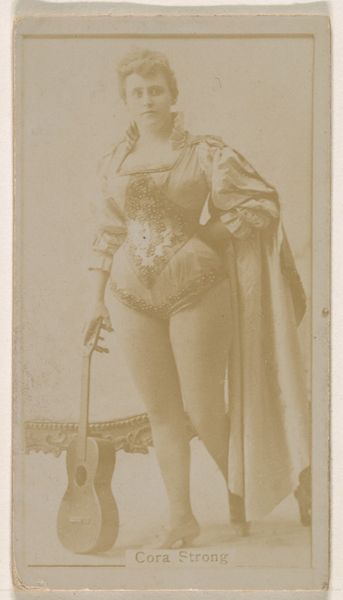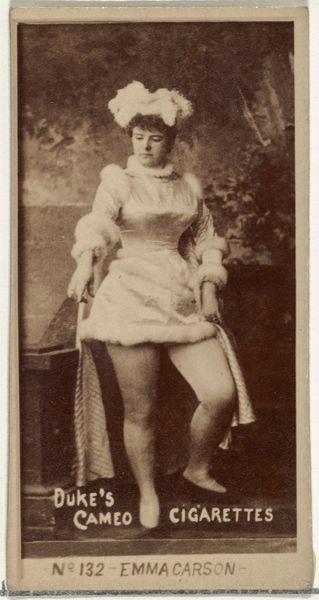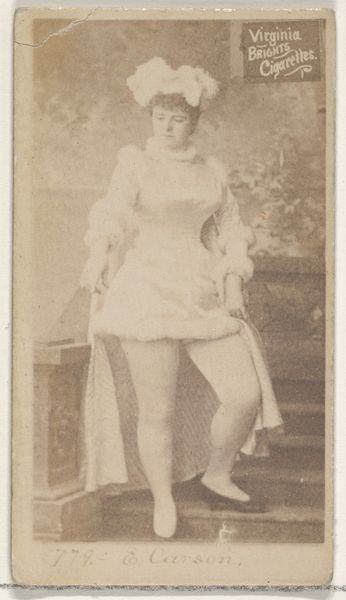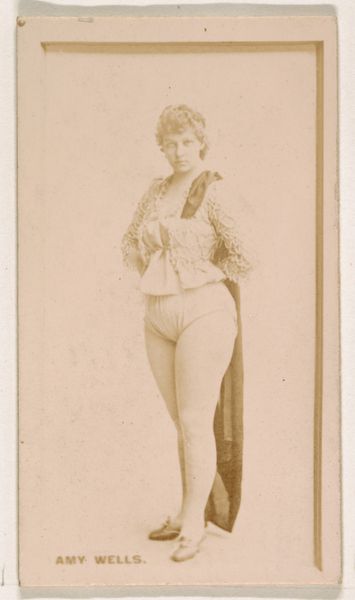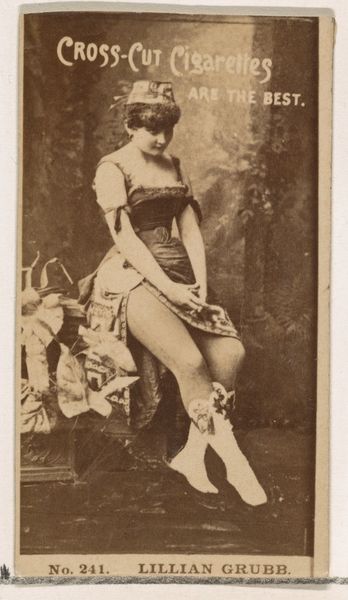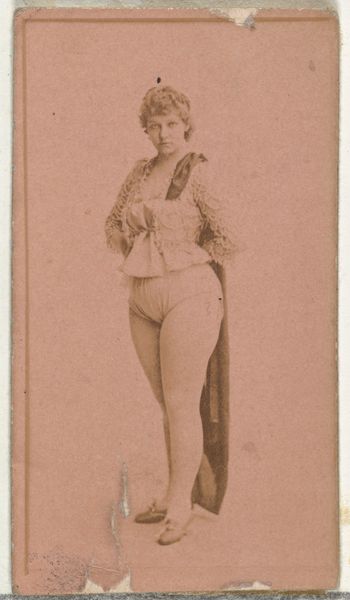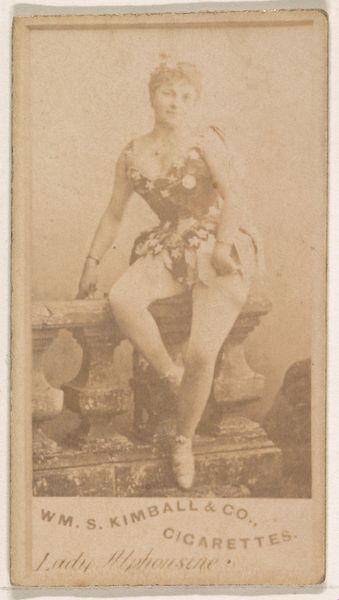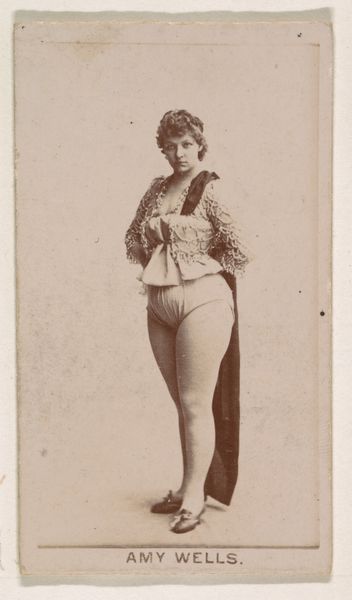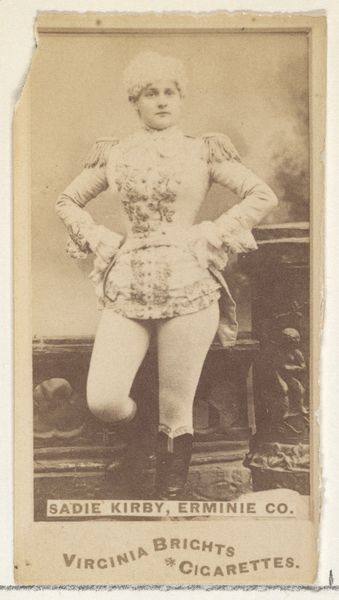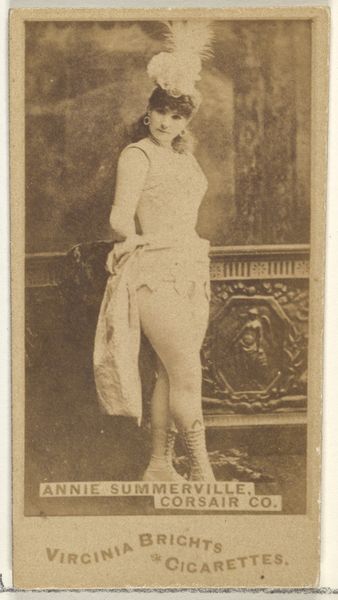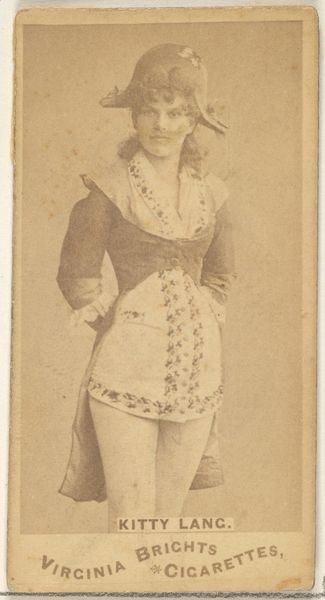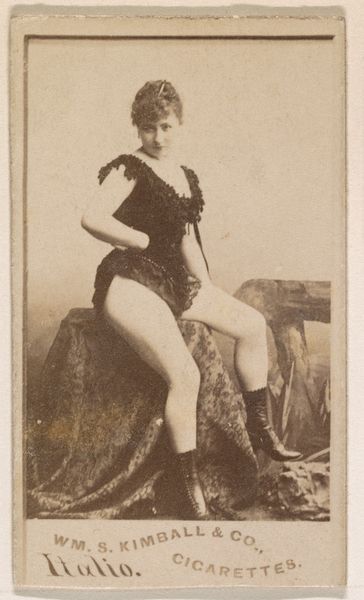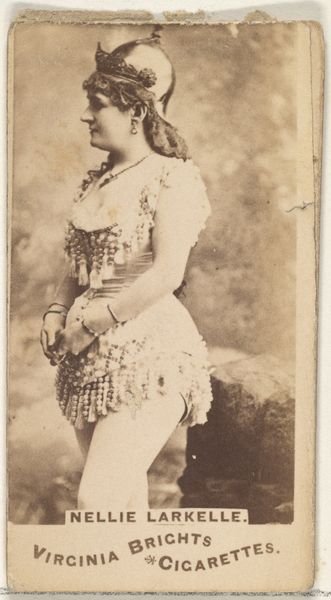
Actress with guitar, from the Actresses series (N245) issued by Kinney Brothers to promote Sweet Caporal Cigarettes 1890
0:00
0:00
print, photography, photomontage
#
portrait
# print
#
photography
#
photomontage
#
genre-painting
#
nude
Dimensions: Sheet: 2 1/2 × 1 7/16 in. (6.4 × 3.7 cm)
Copyright: Public Domain
Curator: Here we see “Actress with guitar, from the Actresses series,” a photomontage produced around 1890 by the Kinney Brothers Tobacco Company. These were included in packages of Sweet Caporal Cigarettes. Editor: It’s a striking sepia image. The almost bare-skinned figure is… provocative, and the texture feels rich, almost like velvet despite being a simple print. There's a theatrical feel—not just the costume, but the woman’s deliberate pose. Curator: Absolutely. Consider the deliberate use of the guitar – a very loaded object, suggesting performance and perhaps hinting at her role and persona, feeding the Victorian obsession with theater and spectacle. But the overt display, juxtaposed with this almost doll-like portrayal, lends an almost subversive power to her image. Editor: I’m interested in this “series.” These weren't exactly fine art prints. What can examining these material conditions tell us? Were they mass-produced using relatively new printing techniques, making images like this widely available? It makes me think about the power dynamics implicit in creating desire and marketing images like these, tucked away in the disposable packaging of something as pedestrian as cigarettes. Curator: A powerful point. These tobacco cards, along with others that included athletes, flags, or indigenous people were like miniature portals into different worlds, influencing both conscious desires and subconscious stereotypes. The imagery becomes encoded with ideas of beauty, exoticism, and cultural values. Editor: Yes, they’re fascinating because they reveal how image making became a tool of mass production. It’s not just what's depicted; it's the way these images were used, packaged, distributed—embedded into everyday life through commerce and consumerism. What sort of labor went into it? The photo session, of course, the etching of the printing plates, and of course, packing it away into a small container… all so commonplace, but so essential in the production of art. Curator: Right! And that process informs how such portraits shape our historical memory; a beautiful example of the interwovenness of the individual and collective experience through visual and material artifacts. Editor: Exactly. I am walking away thinking less about “the actress” than I am about labor and marketing... How the mechanisms of consumer culture influence visual vocabularies.
Comments
No comments
Be the first to comment and join the conversation on the ultimate creative platform.
